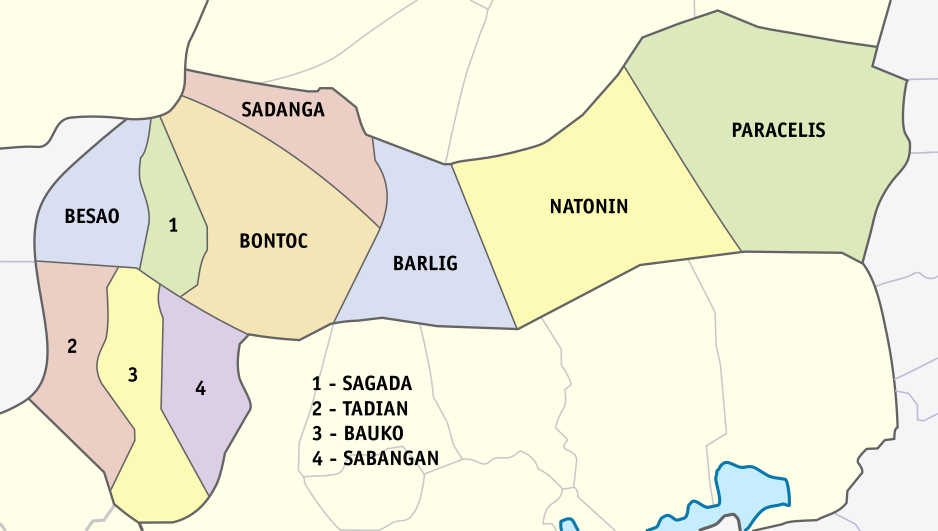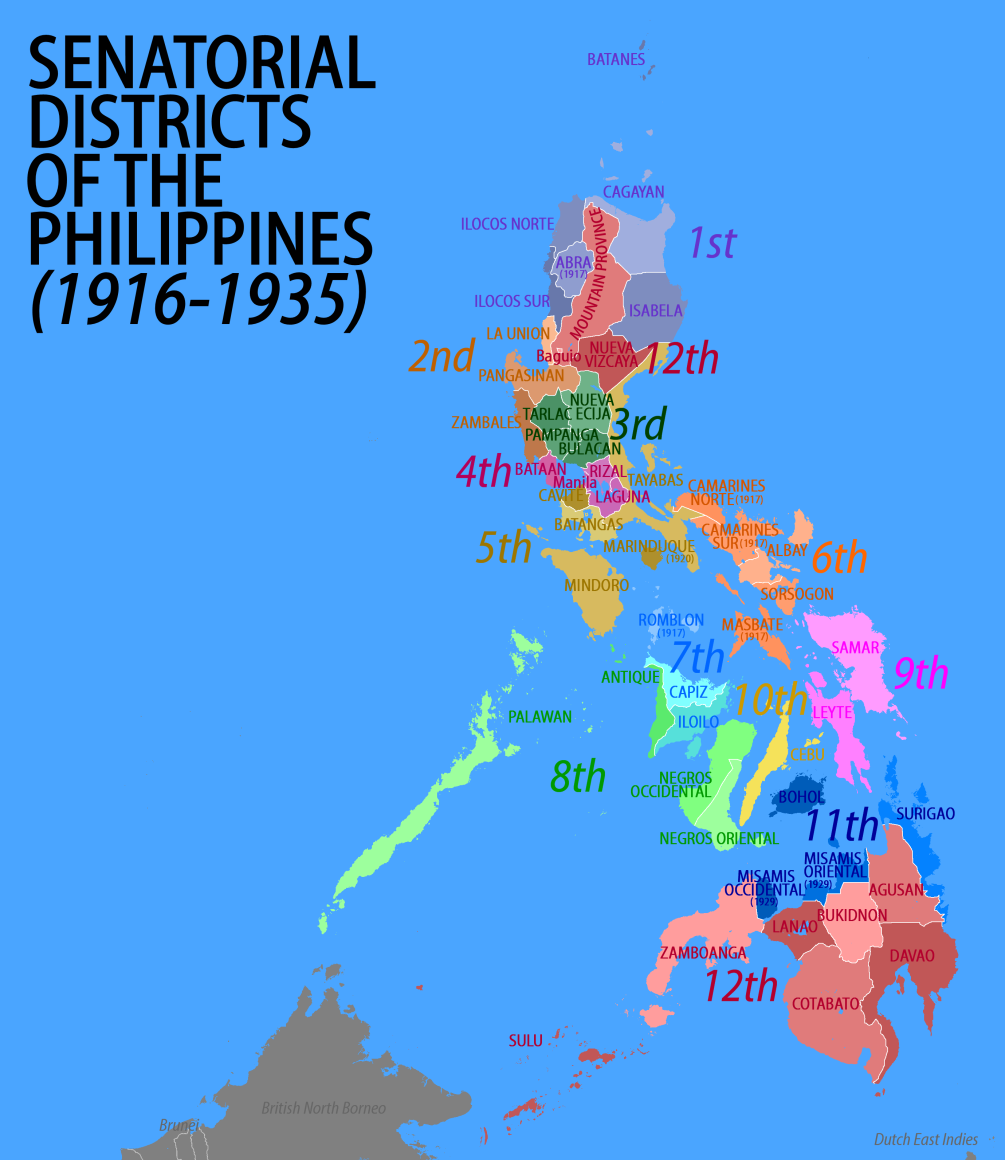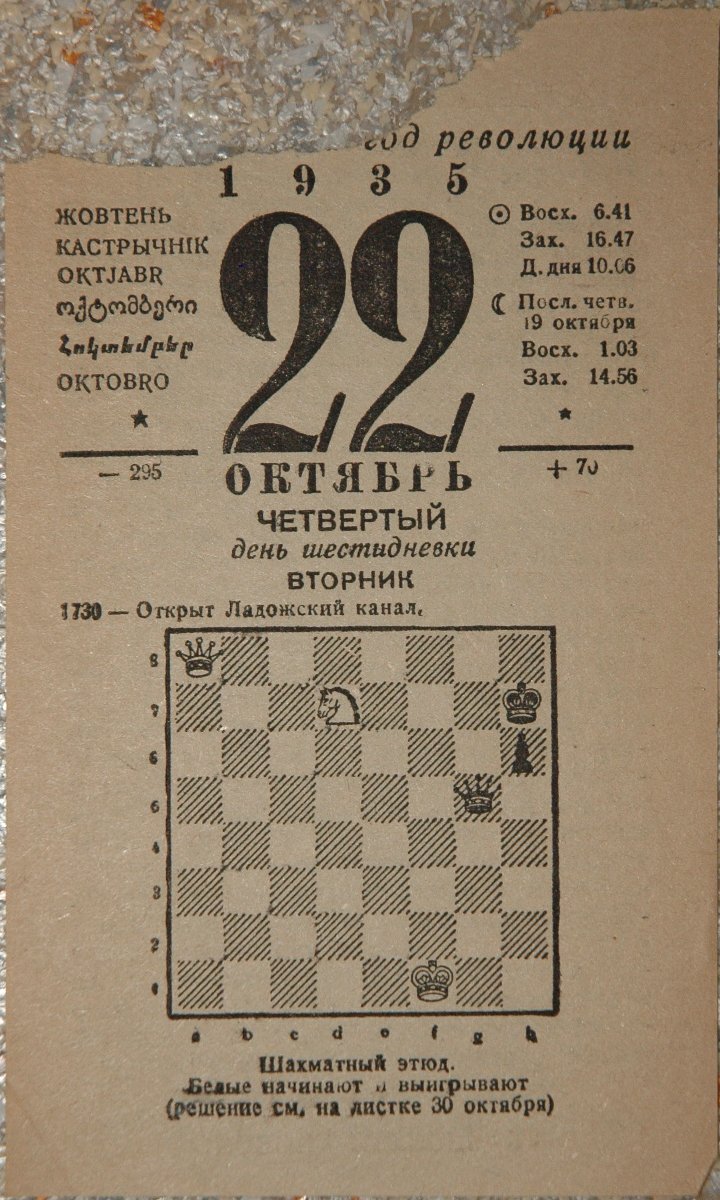|
Legislative Districts Of Mountain Province
The legislative districts of Mountain Province are the representations of Mountain Province in the various national legislatures of the Philippines. The province is currently represented in the lower house of the Congress of the Philippines through its lone congressional district. The present-day provinces of Apayao, Benguet, Ifugao and Kalinga, as well as the highly urbanized city of Baguio, formed part of the old (pre-division) Mountain Province's representation until 1969. Since 1969, the representation of Mountain Province has been confined only to the limits of the former sub-province of Bontoc. History As the undivided Mountain Province (1908–1966) Initially being excluded from representation in the lower house of the Philippine Legislature in 1907, the then non-Christian-majority areas of the Philippines — which included the undivided Mountain Province — were finally extended legislative representation with the passage of the Philippine Autonomy Act in 1916 b ... [...More Info...] [...Related Items...] OR: [Wikipedia] [Google] [Baidu] |
Mountain Province
Mountain Province (; ; ; ; ; ) is a landlocked province of the Philippines in the Cordillera Administrative Region in Luzon. Its capital is Bontoc while Bauko is the largest municipality. Mountain Province was formerly referred to as Mountain in some foreign references. The name is usually shortened by locals to Mt. Province. The province was named so for being in the Cordillera Central mountain range found in the upper realms of Luzon island. Mountain Province was also the name of the historical province that included most of the current Cordillera provinces. This old province was established by the Philippine Commission in 1908, and was later split in 1966 into Mountain Province, Benguet, Kalinga-Apayao and Ifugao. The province is also known for its mummy caves, which contain naturally mummified bodies, and for its hanging coffins. History Spanish colonial era The area of the Cordillera mountains proved difficult to control by the Spaniards. During the long Spanish ... [...More Info...] [...Related Items...] OR: [Wikipedia] [Google] [Baidu] |
Philippine Senate
The Senate of the Philippines () is the upper house of Congress, the bicameral legislature of the Philippines, with the House of Representatives as the lower house. The Senate is composed of 24 senators who are elected at-large (the country forms one district in senatorial elections) under a plurality-at-large voting system. Senators serve six-year terms with a maximum of two consecutive terms, with half of the senators elected in staggered elections every three years. When the Senate was restored by the 1987 Constitution, the 24 senators who were elected in 1987 served until 1992. In 1992, the 12 candidates for the Senate obtaining the highest number of votes served until 1998, while the next 12 served until 1995. This is in accordance with the transitory provisions of the Constitution. Thereafter, each senator elected serves the full six years. From 1945 to 1972, the Senate was a continuing body, with only eight seats up every two years. Aside from having its concurren ... [...More Info...] [...Related Items...] OR: [Wikipedia] [Google] [Baidu] |
Senatorial Districts Of The Philippines
The senatorial districts of the Philippines were the representations of the provinces of the Philippines in the Philippine Senate from 1916 to 1935. History The enactment of the Philippine Autonomy Act (popularly known as "Jones Law") in August 1916 by the United States Congress provided for the creation of a bicameral legislature consisting of a lower chamber (House of Representatives) and an upper chamber (Senate). Until then the Philippine Commission held the executive power and some legislative powers over the American colony. The system of government of the Philippines in its early years of transition to democratic self-government was deliberately structured to emulate the American model. The Philippines thus followed the American system of electing the members of the 24-seat senate by district. The districts were organized and numbered in a roughly north–south fashion, much like the present administrative regions. The first eleven districts were composed of estab ... [...More Info...] [...Related Items...] OR: [Wikipedia] [Google] [Baidu] |
National Assembly Of The Philippines
The National Assembly of the Philippines (, ) refers to the legislature of the Commonwealth of the Philippines from 1935 to 1941, and of the Second Philippine Republic during the Japanese occupation. The National Assembly of the Commonwealth was created under the Philippine Commonwealth Constitution, 1935 Constitution, which served as the Philippines' Constitution, fundamental law to prepare it for its independence from the United States of America. The National Assembly during the Japanese occupation of the Philippines during the Second World War in the Pacific War, Pacific was created by the 1943 Constitution of the Philippines, 1943 Constitution. With the invasion of the Philippines, the Commonwealth government had gone into Government in exile of the Commonwealth of the Philippines, exile to the United States. It left behind a skeletal bureaucracy whose officials formed a government under the Japanese Imperial Army. In an attempt to win the loyalty of Filipino people, Filip ... [...More Info...] [...Related Items...] OR: [Wikipedia] [Google] [Baidu] |
1935 Philippine Legislative Election
Events January * January 7 – Italian premier Benito Mussolini and French Foreign Minister Pierre Laval conclude Franco-Italian Agreement of 1935, an agreement, in which each power agrees not to oppose the other's Colonial empire, colonial claims. * January 12 – Amelia Earhart becomes the first person to successfully complete a solo flight from Hawaii to California, a distance of . * January 13 – A plebiscite in the Saar (League of Nations), Territory of the Saar Basin shows that 90.3% of those voting wish to join Germany. * January 24 – The first canned beer is sold in Richmond, Virginia, United States, by Gottfried Krueger Brewing Company. February * February 6 – Parker Brothers begins selling the board game Monopoly (game), Monopoly in the United States. * February 13 – Richard Hauptmann is convicted and sentenced to death for the kidnapping and murder of Charles Lindbergh Jr. in the United States. * February 15 – The discovery and clinical developme ... [...More Info...] [...Related Items...] OR: [Wikipedia] [Google] [Baidu] |
Cagayan
Cagayan ( ), officially the Province of Cagayan (; ; ; isnag language, Isnag: ''Provinsia nga Cagayan''; ivatan language, Ivatan: ''Provinsiya nu Cagayan''; ; ), is a Provinces of the Philippines, province in the Philippines located in the Cagayan Valley Regions of the Philippines, region, covering the northeastern tip of Luzon. Its capital is Tuguegarao, the largest city of that province as well as the regional center of Region 2 (Cagayan Valley). It is about northwest of Manila, and includes the Babuyan Islands to the north. The province borders Ilocos Norte and Apayao to the west, and Kalinga (province), Kalinga and Isabela (province), Isabela to the south. Cagayan was one of the early provinces that existed during the Spanish colonial period. Called ''La Provincia de Cagayan'', its borders essentially covered the entire Cagayan Valley, which included the present provinces of Isabela (province), Isabela, Quirino (province), Quirino, Nueva Vizcaya, Batanes and portions of Ka ... [...More Info...] [...Related Items...] OR: [Wikipedia] [Google] [Baidu] |
La Union
La Union (), officially the Province of La Union (; ; ; ; ; ), is a coastal province in the Philippines situated in the Ilocos Region on the island of Luzon. The province's capital, the San Fernando, La Union, City of San Fernando, is the most populous city in La Union and serves as the regional center of the Ilocos Region. Bordered by Ilocos Sur to its north, Benguet to its east, and Pangasinan to its south, with the West Philippine Sea to the west, La Union is located 273 kilometers (170 miles) north of Metro Manila and 57 kilometers (35 miles) northwest of Baguio, Baguio City. The province spans an area of 1,497.70 square kilometers (578.27 square miles). As of the 2020 census, La Union had a population of 822,352, resulting in a density of 550 inhabitants per square kilometer or 1,400 persons per square mile. The province had 538,730 registered voters as of 2022. The province official language is Ilocano language, Iloco (Ilocano), as declared by the provincial government of ... [...More Info...] [...Related Items...] OR: [Wikipedia] [Google] [Baidu] |
Ilocos Sur
Ilocos Sur (), officially the Province of Ilocos Sur (; ), is a Provinces of the Philippines, province in the Philippines located in the Ilocos Region in Luzon. Located on the mouth of the Mestizo River is the capital of Vigan, while Candon is the most-populous city. Ilocos Sur is bordered by Ilocos Norte and Abra (province), Abra to the north, Mountain Province to the east, La Union and Benguet to the south and the West Philippine Sea to the west. Ilocos Sur was established in 1818 when the province of Ilocos (province), Ilocos was split into two: the north (now Ilocos Norte) and the south (Ilocos Sur). At that time, it included parts of Abra and the upper half of present-day La Unión. The current boundaries of the province set in March 1917 by virtue of Act No. 2683. The province is home to two UNESCO World Heritage Sites, namely, the Vigan, Heritage City of Vigan and the Santa Maria Church, Santa Maria Basilica. History Early history Before the History of the Philippi ... [...More Info...] [...Related Items...] OR: [Wikipedia] [Google] [Baidu] |
Rizal (province)
Rizal, officially the Province of Rizal (), is a Provinces of the Philippines, province in the Philippines located in the Calabarzon region in Luzon. Its capital is the city of Antipolo. It is about east of Manila. The province is named after José Rizal, one of the main national heroes of the Philippines. It is bordered by Metro Manila to the west, Bulacan to the north, Quezon to the east and Laguna province, Laguna to the southeast. The province also lies on the northern shores of Laguna de Bay, the largest lake in the country. Rizal is a mountainous province perched on the western slopes of the southern portion of the Sierra Madre (Philippines), Sierra Madre mountain range. Antipolo serves as the provincial capital since 2020, having been an administrative center since 2009 with the capitol located in the city. Previously, Pasig served as the capital, a designation it retained even after becoming part of the Metro Manila, National Capital Region in 1975. The province is a par ... [...More Info...] [...Related Items...] OR: [Wikipedia] [Google] [Baidu] |
Lope K
Lope is an old given name of Basque, Gascon and Spanish origin, derived from Latin ''lupus'', meaning "wolf". Lope may refer to: *Lope de Isásaga (1493–1515), Basque Spanish ''conquistador'' *Lope de Aguirre (1510s – 1561), Basque Spanish ''conquistador'' *Lope de Vega (1562–1635), Spanish poet *Lope Martín, Spanish sailor *Lope Recio Loynaz (1860-1927), Cuban general * Lupo II of Gascony (died 778) * ''Lope'' (film), a 2010 film *Lope de Vega (horse), an Irish bred Thoroughbred racehorse *Lope language, a Loloish language of China * Lopé Department, Gabon * Lope, a type of canter and gallop in horseback riding See also * Lop (other) * Lõpe (other) * López * Loping Airfield, a World War II United States Army Air Forces airfield China * Luoping County, China * Lupe (other) * Ochoa Ochoa ( or ''Otsoa'') is a Spanishhttps://www.ancestry.com/name-origin?surname=ochoa surname of Basque origin common throughout Spain, France, the Americas, and the ... [...More Info...] [...Related Items...] OR: [Wikipedia] [Google] [Baidu] |
Manila
Manila, officially the City of Manila, is the Capital of the Philippines, capital and second-most populous city of the Philippines after Quezon City, with a population of 1,846,513 people in 2020. Located on the eastern shore of Manila Bay on the island of Luzon, it is classified as a Cities of the Philippines#Independent cities, highly urbanized city. With , Manila is one of the world's List of cities proper by population density, most densely populated cities proper. Manila was the first chartered city in the country, designated bPhilippine Commission Act No. 183on July 31, 1901. It became autonomous with the passage of Republic Act No. 409, "The Revised Charter of the City of Manila", on June 18, 1949. Manila is considered to be part of the world's original set of global cities because its commercial networks were the first to extend across the Pacific Ocean and connect Asia with the Hispanic America, Spanish Americas through the Manila galleon, galleon trade. This marked t ... [...More Info...] [...Related Items...] OR: [Wikipedia] [Google] [Baidu] |





